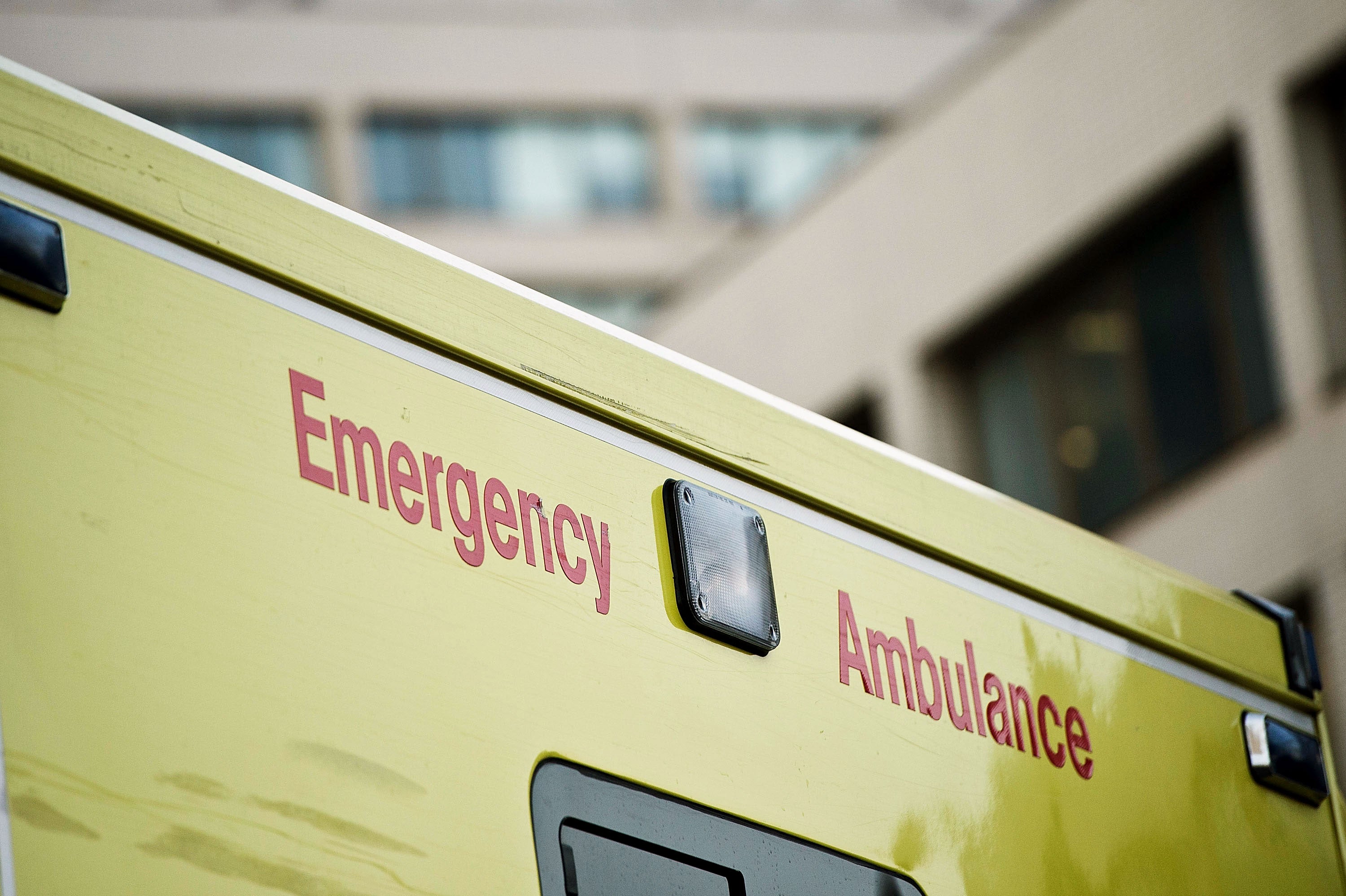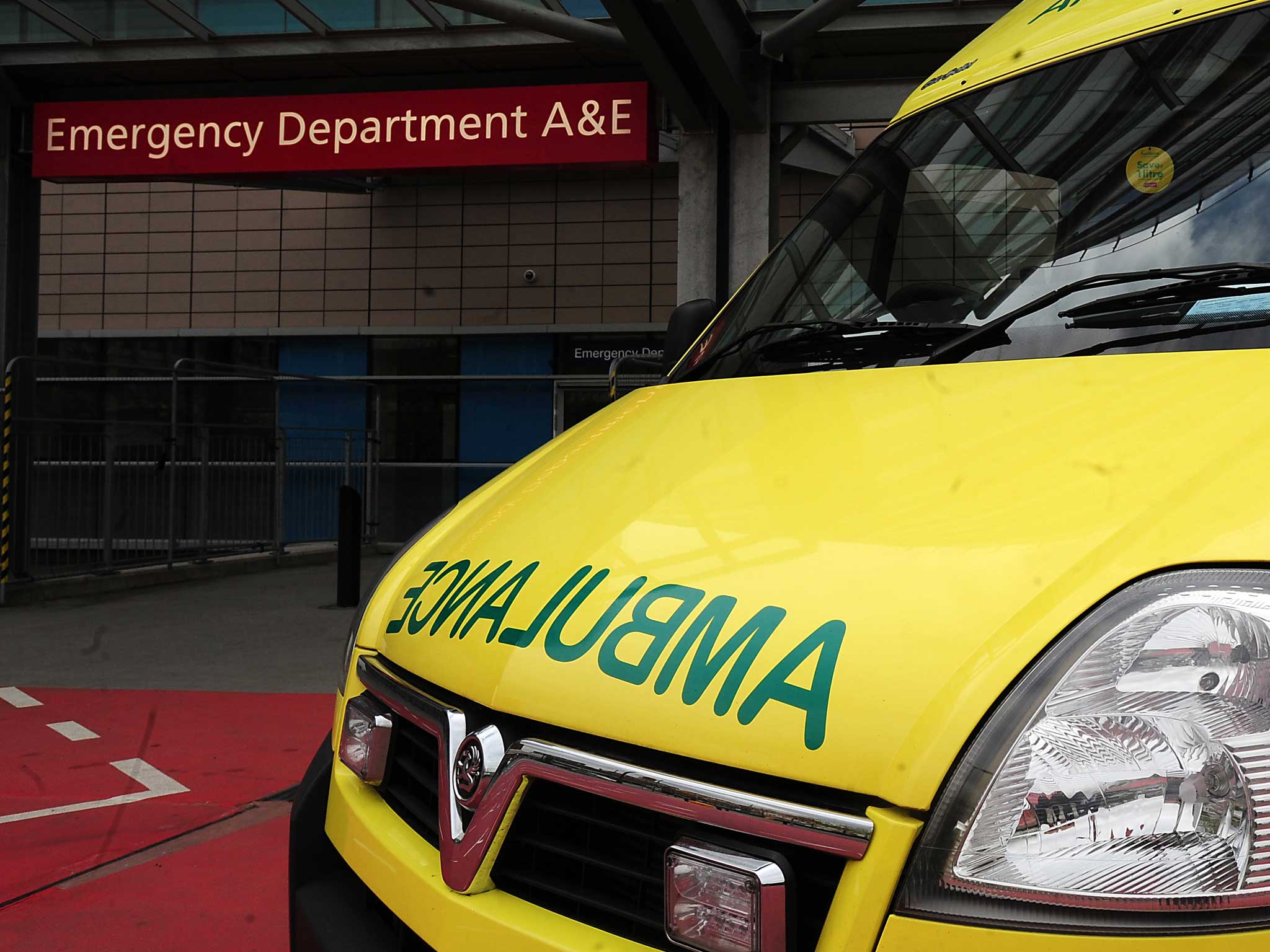A&E patients waiting in ambulances for eight hours as hospitals left 'full to bursting'
New data shows 87 per cent rise in people waiting over 30 minutes for A&E

Your support helps us to tell the story
From reproductive rights to climate change to Big Tech, The Independent is on the ground when the story is developing. Whether it's investigating the financials of Elon Musk's pro-Trump PAC or producing our latest documentary, 'The A Word', which shines a light on the American women fighting for reproductive rights, we know how important it is to parse out the facts from the messaging.
At such a critical moment in US history, we need reporters on the ground. Your donation allows us to keep sending journalists to speak to both sides of the story.
The Independent is trusted by Americans across the entire political spectrum. And unlike many other quality news outlets, we choose not to lock Americans out of our reporting and analysis with paywalls. We believe quality journalism should be available to everyone, paid for by those who can afford it.
Your support makes all the difference.Hundreds of thousands of sick patients have been forced to wait in ambulances outside emergency units - some stranded for up to eight hours - according to new figures, because hospitals have been left "full to bursting".
Data obtained by the Labour Party show that patients are being cared for in vehicles outside A&E units for hours at a time, as “handover delays” continue to affect people up and down the country.
The new statistics, obtained through Freedom of Information requests, show that 280,000 patients suffered “handover delays” of at least 30 minutes during 2013/14, which includes 30,000 people who were forced to wait for an hour or more.
Information highlighting three areas where people were worst affected showed that patients had waited up to eight hours and 11 minutes in West Midlands to get to the emergency units.
Delays in other parts of the country showed people stranded in ambulances for seven and a half hours, while waits in London were over six hours.

Labour shadow health minister Jamie Reed told the Telegraph the figures show that under David Cameron, hospitals have become “full to bursting,” making ambulances queue at the doors for hours on end.
“Thousands of vulnerable people, many of them elderly and frightened, are being wrongly held in the backs of ambulances because hospitals don't have the space,” he said.
The figures show an 87 per cent rise in the number of people forced to wait over 30 minutes since 2010/11, and a 50 per cent rise in people waiting over an hour.
But the NHS England has countered the figures with its own data, claiming that the number of ambulance handover delays for the winter of 2013/14 were down on the previous year by 30 per cent. However, the data only covers the winter period.
An NHS England spokesperson said: “We know that demands on ambulances are rising every year, and we’re allocating a further £28 million to ambulance providers to help them deal with these pressures.
“However in some cases it may be the right thing to do for a patient to be cared for in the ambulance before transfer to stabilise their condition.”
NHS guidelines state that new arrivals to A&E should enter hospitals within 15 minutes, but NHS England said one of the aims of its Urgent and Emergency Care Review is to “capitalise on the skills and abilities of paramedics and the wider workforce so that ambulances can become more of a mobile treatment service, rather than just a transport service.”
Join our commenting forum
Join thought-provoking conversations, follow other Independent readers and see their replies
Comments